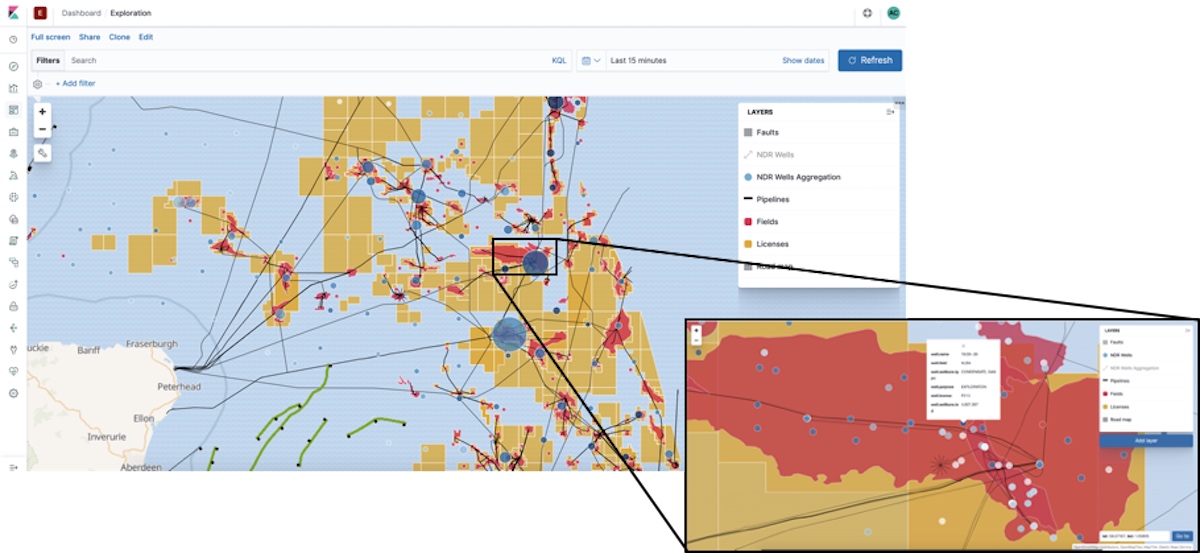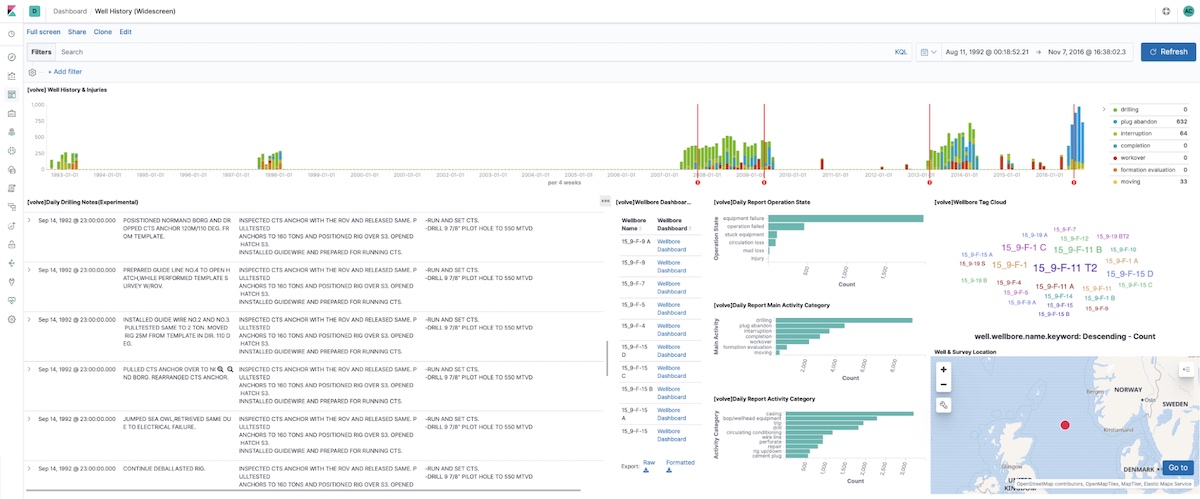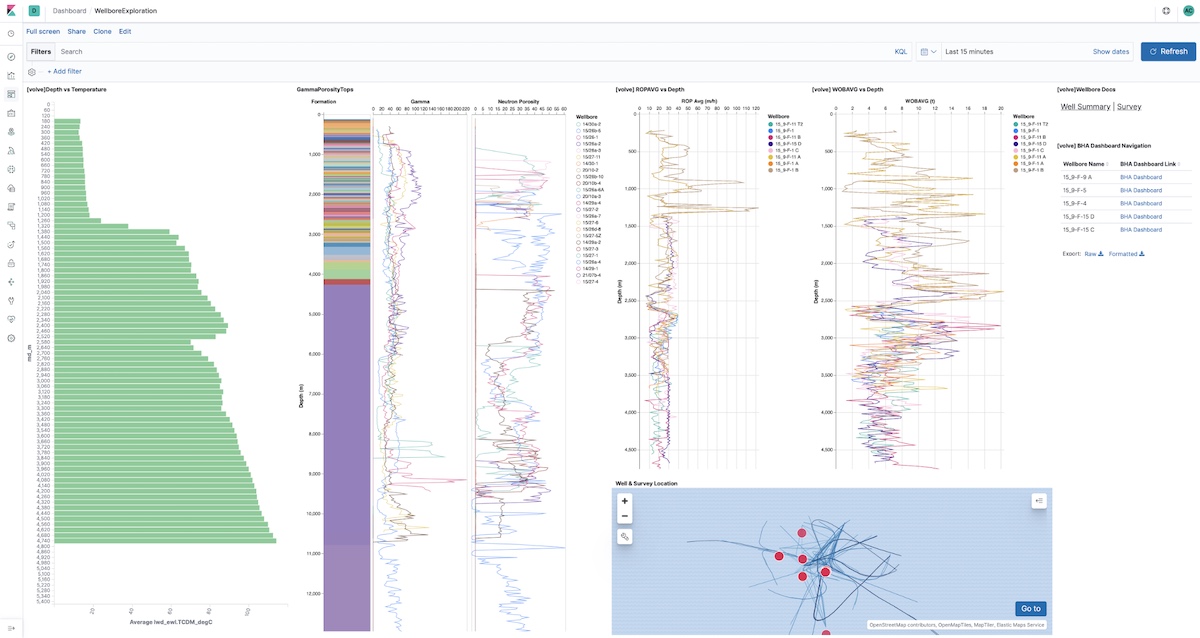Elastic Stack in the Energy industry
The Elastic Stack powers a great deal of the world’s search experience and is already being used widely within the energy industry.
All data is welcome
Energy data is typically vast and complex. In the Elastic Stack, analysts can unify, interrogate, and analyze geospatial, time/depth series, and full-text data within a single pane of glass.
Geospatial data
Whether you're investigating wells, basins, licenses, or time/depth series data, both geo data and search play an important role. The Maps solution in Kibana gives you an intuitive way to weave geospatial layers in with your temporal, structured, text, and other Elasticsearch data — so you can ask (and answer) meaningful questions.

Full-text data
Being able to find all documentation associated to particular rigs, drilling equipment, basins, or wells will enable engineers and analysts to unlock the hidden insight their predecessors found.

Time/depth series data
Whether information is coming from drilling string components (LWD, MWD, RSS, Wireline), rigs, pipelines, vessels, ESPs, HPUs, or other components, heaps of data are generated. This data will fall within either the domain of depth or time. And, in some cases, both.

How is Elastic being used today?
Below are real-world, anonymized use cases of the Elastic Stack for energy.
Speed layer for Hadoop
Problem: Gaining insight and searching across Hadoop quickly
Solution: An upstream energy organization realized their Hadoop-based ecosystem was not meeting their requirements. They decided to augment their solution with Elasticsearch and Kibana as a speed layer using the Elasticsearch-Hadoop connector. This now allows a huge user base to search and access their data in a consumable fashion without having to learn Hadoop. Speed, relevance, and scale were the key pillars for this decision.
Geospatial vessel tracking
Problem: Inability to track vessels with hydrocarbon cargo in real time
Solution: This downstream company adopted Elasticsearch for their Geographic Information System (GIS) shipping application needs. Elastic enables them to search and analyze vessel position and movement data in real-time, which are plotted on a global map. Search can now be fine-tuned by criteria such as cargo, size, location, and time.
Rig analytics
Problem: Poor visibility of real-time rig activities and behavior from IoT sensors
Solution: An upstream organization now streams all data from 5,000 wells into Elasticsearch in real time. Elastic machine learning finds anomalies in this sensor data with alerts triggered if certain conditions are met (or not met). Analysts can then seamlessly search more than 100 terabytes of data to find insights on anomalous activity and tinker with processes as needed.
Downhole drilling analytics
Problem: Inability to search across all downhole drilling data with less-than-a-second response time
Solution: Without disrupting their standard work instructions, this upstream company now ingests their LWD, MWD, and RSS metadata straight into Elasticsearch. This data is then used by data scientists and service quality engineers to find failure analysis insights to streamline procedures, optimize algorithms, and provide visibility to their service and capability. They leverage Kibana heavily to build visualizations and dashboards for leadership-ready data analysis. This enabled their analysts and engineers to find all the data they needed in minutes — not days or weeks.
1, 2, 3, go
The Elastic Stack can be deployed through the following deployment methods:
- Let us do the hosting within our own SaaS (Elastic Cloud). We offer various SaaS options — including availability in every major cloud provider's marketplace — as well as a private SaaS option if you want your own dedicated VPC.
- Elastic Cloud Enterprise, our orchestration platform for automating Elasticsearch clusters following our best practices, which runs on your own infrastructure
- Elastic Cloud for Kubernetes, enabling you to run Elasticsearch in Kubernetes safely using our operator
- Self-manage the Elastic Stack by manually downloading and ingesting your data.
 |  |  |
Interested?
If you’d like further information on how Elastic can be used for energy data, feel free to reach out to us via our contact page.